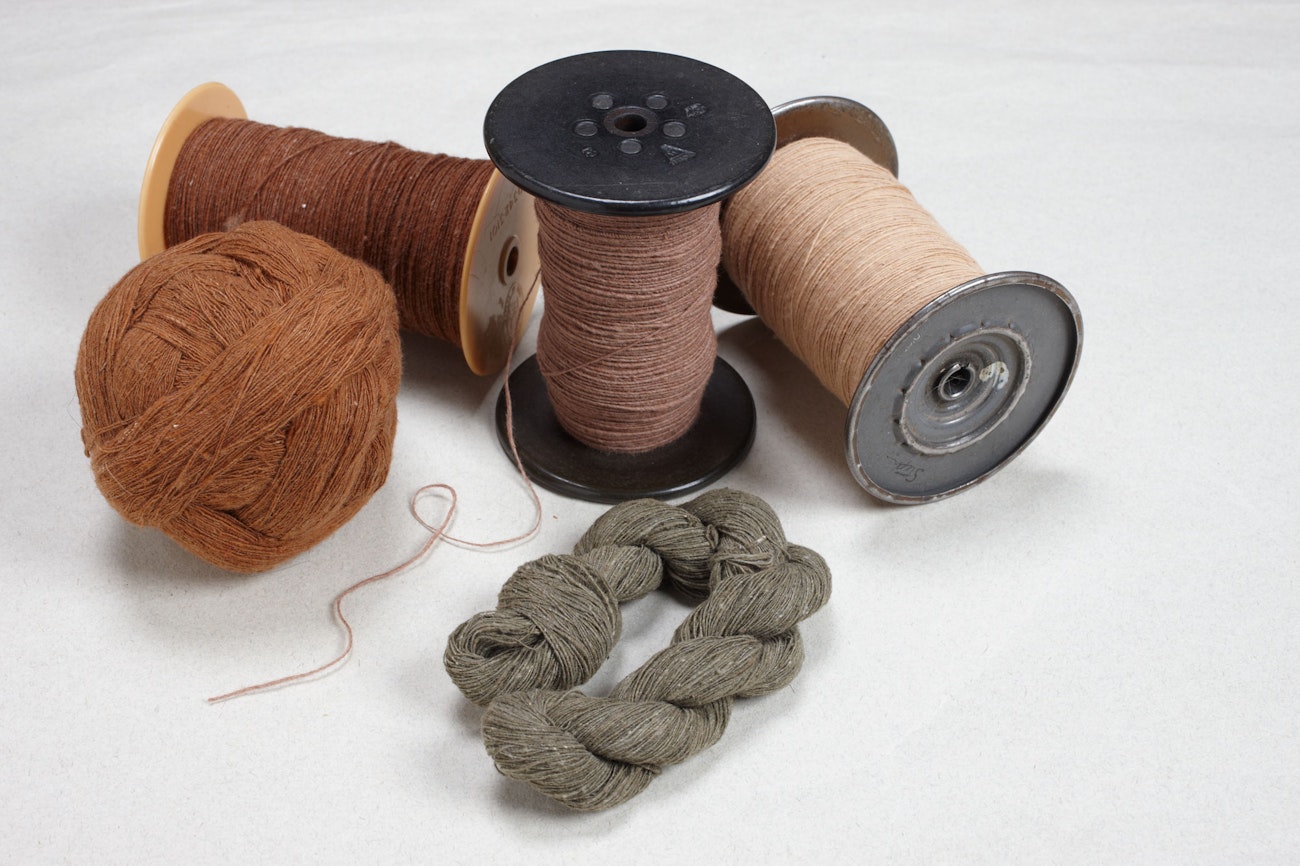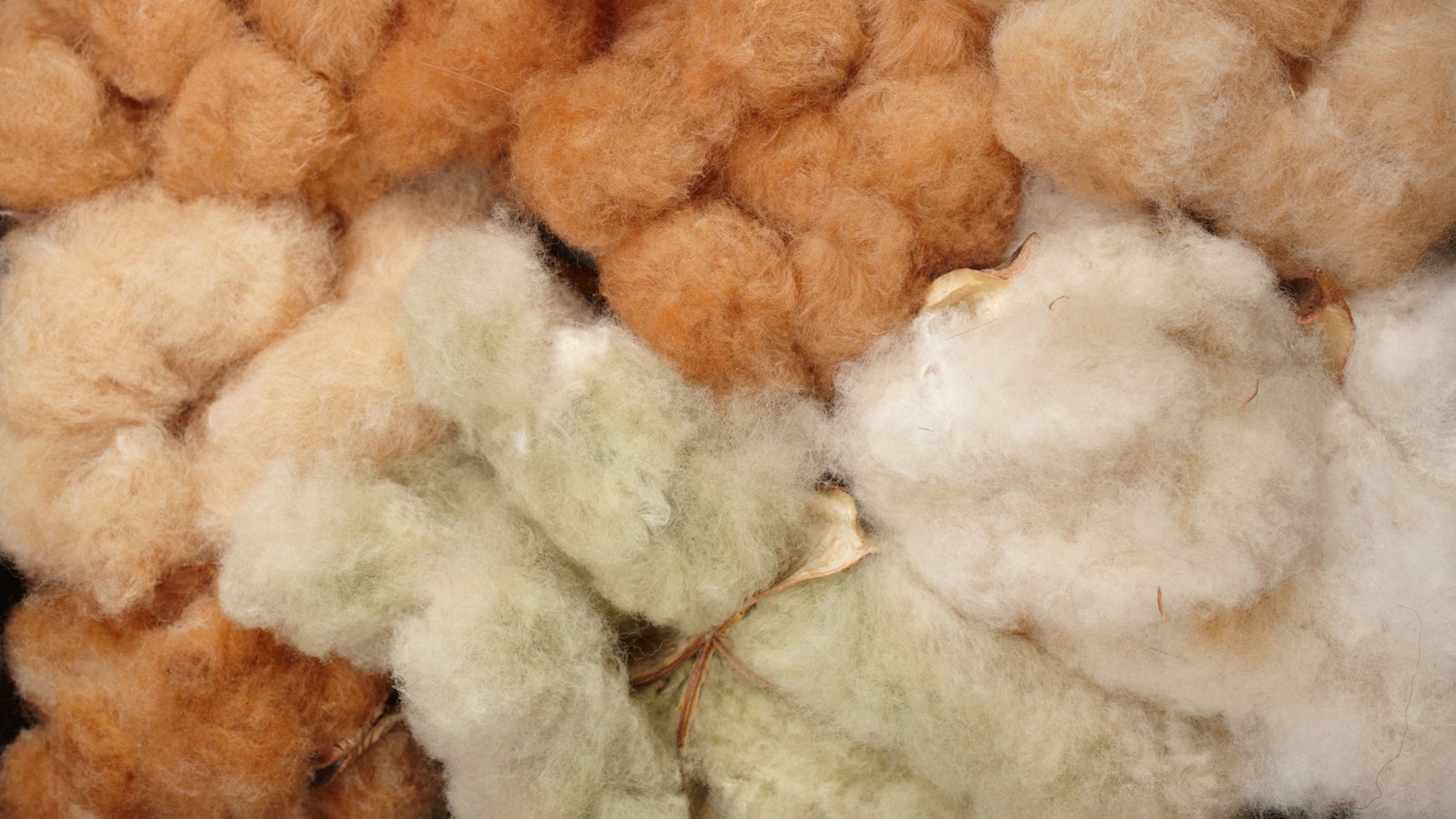Subscriber Exclusive
Cotton Comes in More than White! Cotton’s Natural Colors, Straight from the Plant
Large-scale farms produce acres of the whitest cotton. But cotton comes in a rainbow of colors that indigenous and small-scale farmers are still growing.
Large-scale farms produce acres of the whitest cotton. But cotton comes in a rainbow of colors that indigenous and small-scale farmers are still growing. <a href="https://farmfiberknits.com/cottons-comes-in-more-than-white/">Continue reading.</a>
https://farmfiberknits.com/cdn-cgi/image/format=auto/https://www.datocms-assets.com/101500/1686882186-cw13111-0005.jpg?auto=format&w=900
Most cotton yarn and spinning fiber are pure white, but cotton comes in a surprising spectrum of natural colors, too.
What Colors?
Many people use the term brown to describe non-white cotton, but this is a vast understatement. Naturally colored cotton ranges from a warm light pearl gray to deep—nearly black—chocolate brown. The red/brown range includes increments from light orangey tan to rich brick red. Manila, yellow, tawny, and buff represent golden yellows. There are greens from palest sea foam to dark olive. Natural-colored cotton also comes in very rare mauve and lilac.
The so-called brown cottons are complex, subtle colors reminiscent of those from natural plant-source dyes.
What Makes the Color?
The color is an integral part of the cotton fiber. The cotton grows with color embedded in the cell wall, similar to the way that hair grows in color. It is not a dye; dyes are molecules that stick to the surface of the fiber. Their presence causes light to bounce and refracts the light back to our eye, changing the appearance of the fiber.
SUBSCRIBER EXCLUSIVE
Most cotton yarn and spinning fiber are pure white, but cotton comes in a surprising spectrum of natural colors, too.
What Colors?
Many people use the term brown to describe non-white cotton, but this is a vast understatement. Naturally colored cotton ranges from a warm light pearl gray to deep—nearly black—chocolate brown. The red/brown range includes increments from light orangey tan to rich brick red. Manila, yellow, tawny, and buff represent golden yellows. There are greens from palest sea foam to dark olive. Natural-colored cotton also comes in very rare mauve and lilac.
The so-called brown cottons are complex, subtle colors reminiscent of those from natural plant-source dyes.
What Makes the Color?
The color is an integral part of the cotton fiber. The cotton grows with color embedded in the cell wall, similar to the way that hair grows in color. It is not a dye; dyes are molecules that stick to the surface of the fiber. Their presence causes light to bounce and refracts the light back to our eye, changing the appearance of the fiber. [PAYWALL]
Are they Permanent? Do they Change? Fade? Wash Out?
Most of the naturally occurring cotton colors are permanent, unlike dyes, which often lose color over time. Colored cottons can change in time, acquiring a patina—a depth that use and sunlight gives them. The exception is green cotton, which may indeed fade in sunlight when the green color loses blue and shifts to yellow/brown. I have, however, seen that shift reversed in the next laundering.
Boiling any cotton will change its color. Sometimes light brown cotton turns deep chocolate, and medium brown cotton can turn brick red. You won’t know what color your cotton will be until you boil it. Even in white cotton, any small bit of leaf or seed hull can add enough colorant and tannin to tinge the cotton a cream color when boiled. More leaf can dye it yellow—permanently. The off-white color of muslin fabric is produced by bits of leaf and seed hull being spun, woven, and washed with the white fibers, which consequently dye the cloth to a manila color.
Naturally colored cottons do not need to be boiled to set the color, except in the case of green cotton. The color of green cotton is more lightfast after being boiled, and frequently it emerges a much deeper shade. If you are working with handspun cotton, you will need to boil the cotton anyway to set the twist and scour field contaminants. Even commercially spun cotton yarn can benefit from a boiling to emerge limp and lovely, with all the lively twist relieved. With all the processing oils removed, cotton yarns are far more absorbent, too.

Clockwise from left, a ball of brown cotton handspun in Guatemala; three bobbins of Stephenie Gaustad’s handspun cotton in chocolate, mauve, and pinkish-tan; and a skein of green cotton, spun by Stephenie and boiled.
How do I Get Some?
Naturally colored cotton yarn, spinning fiber, and seed are available from many sources, such as seed exchanges, seed catalogs, and other cotton-plant enthusiasts.
The cotton plant isn’t hard to grow. If you can grow a vine-ripe tomato from your garden, then there is a good chance you can also grow colored cotton. Cotton needs good soil, plenty of sun, and moderate water. (Editor’s note: In some areas, home-growing cotton is not allowed or requires a permit because of concerns about boll weevils. Research restrictions in your area before purchasing or planting any cotton seeds or plants.)
Depending on the variety of cotton, it takes from 150 to 220 frost-free days to produce the fruits—bolls—that contain the cotton fiber. Medium-staple cottons, including upland varieties such as Acala, need 180 days. Cottons with longer and finer staples, such as Pima or Sea Island, have a longer growing season of 220 days. Short, coarse-staple cottons require only 150 days.
In addition to frost-free days, cotton must have warm nights to set the fruit—another way in which it resembles tomatoes. Before the bolls form, cotton plants produce lovely flowers that look like those of hibiscus, another member of the mallow family.
Plant cotton seeds about 1 inch deep and 20 to 30 inches apart. Most cotton plants grow to 3 to 4 feet tall and measure about 30 inches in diameter.
It is simpler and easier to get good fiber production from plants grown in the ground, but to extend your local growing conditions, cotton can be grown in pots. The cotton plant has a robust and lengthy taproot, which can make transplanting risky and careful watering a requirement. If you are growing cotton in a pot, you will need to replenish nutrients with care; too much nitrogen causes the cotton plant to produce lots of green leaves and grow tall, but it will also suppress boll production.
The first frost will take the leaves and damage fruit and fiber left on the plant. Successive frosts kill the plant. Cotton is a perennial in no-frost zones, so plants in temperate areas may grow into trees.
For further questions about growing colored cotton, check with local or Web-based gardening and agricultural resources for suggestions on feeding, watering, growing conditions, and possible restrictions.
If you're interested in working with naturally colored cotton yarn, check out Sally Fox’s Fox Fibre Colorganic.
For a simple but clever shawl pattern featuring naturally colored cotton, try Kate’s Simple and Beautiful Shawl.
Stephenie Gaustad has been spinning, weaving and teaching for more than 40 years. A writer and illustrator, she is the author of Practical Spinner's Guide: Cotton, Flax, Hemp. She has worked with almost every fiber but has a soft spot for cellulose.


